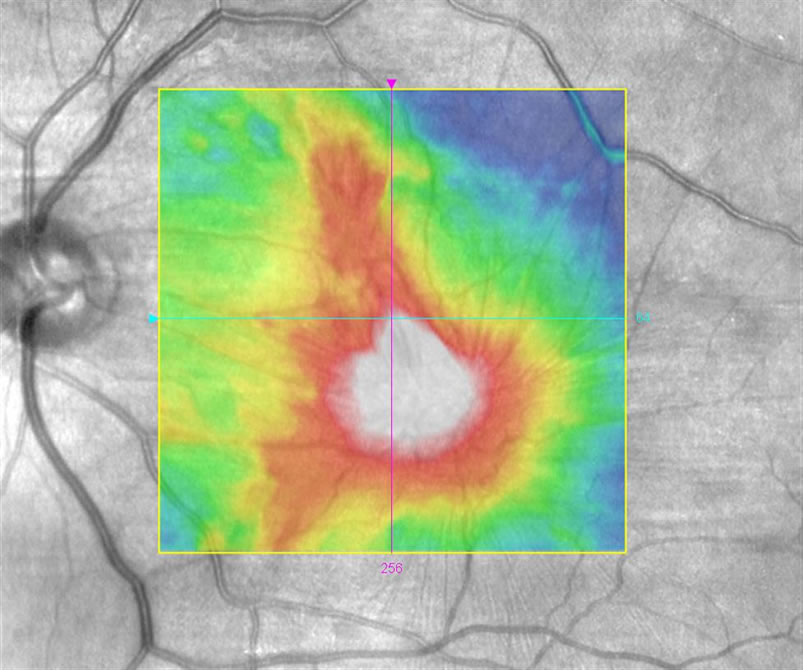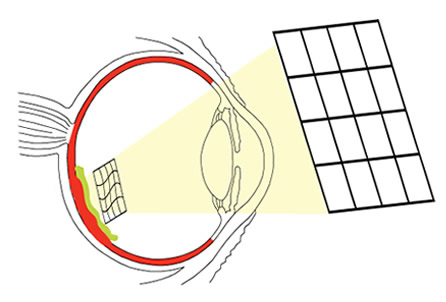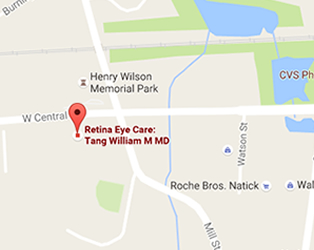Epiretinal Membrane
Overview
Epiretinal membrane, also known as Macular Pucker, is a very common age-related condition. It is also commonly known as a “wrinkle” in the back of the eye. If the condition does not affect the vision much, it can be left alone and be monitored. If the vision becomes significantly affected, the epiretinal membrane can be removed by outpatient surgery called vitrectomy. The visual prognosis is usually good.
Symptoms can include:
- blurred vision
- difficulty seeing to drive
- difficulty reading
- difficulty seeing faces
- visual distortion ( on Amsler Grid )
- different image size between the two eyes

macular pucker (red and white color in the center of image) has caused wrinkles (fine radial lines) in the macula
Risk Factors / Causes
Age is the primary risk factor. Epiretinal membrane usually happens after a posterior vitreous detachment, which means that the vitreous has contracted and pulled away from the retinal surface. Presumably the vitreous gel leaves behind some cellular debris or membranous material on the retinal surface, and then a membrane can start to grow. Some patients with previous retinal tears or retinal vein occlusion or intraocular inflammation can develop epiretinal membrane. Epiretinal membrane is often found after cataract surgery, often because it is more easily detected once the cataract has been removed. Epiretinal membrane does not appear to be caused by any nutritional deficiency or any of the common cardiovascular risk factors.
Treatment
If mild, the epiretinal membrane can be monitored. Epiretinal membrane often gets worse very slowly. If the epiretinal membrane becomes visually significant, it can be removed by vitrectomy, an outpatient surgery. During surgery, the vitreous gel (along with the floaters) of the eye is cleared out and replaced by balanced saline solution. Then the epiretinal membrane is peeled off and removed. After surgery, the retinal can start to regain a smoother surface. Visual improvement is often not 100%, but it can be very satisfactory. In more severe or long-standing cases, the wrinkle is more deep-set, and it may be more difficult for the retina to become smooth again, even if the epiretinal membrane is removed successfully.



